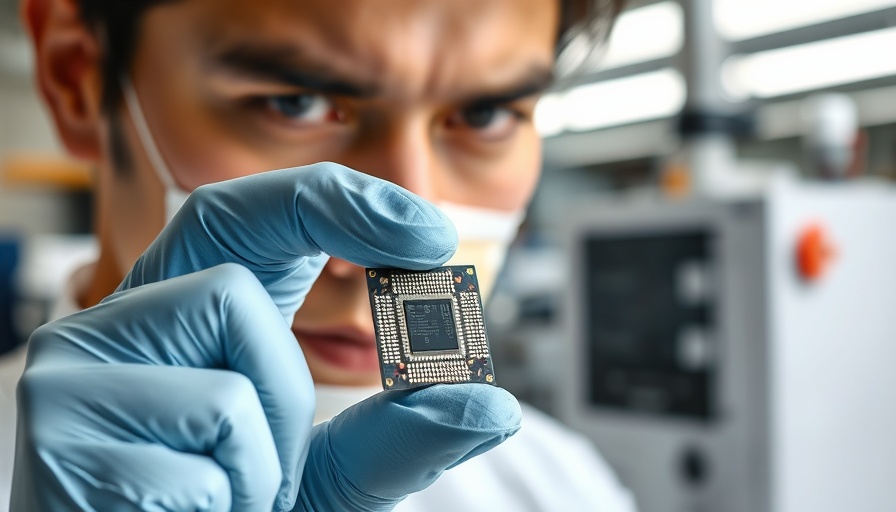
Intel's Bold Strategy for Semiconductor Supremacy
In an ambitious bid to regain its position as a leader in the semiconductor industry, Intel has inaugurated its Fab 52 facility in Chandler, Arizona. This advanced fabrication plant is not just another manufacturing facility; it symbolizes Intel's commitment to revitalizing American chip production amid increasing competition from global giants like TSMC and rising challengers in AI chip innovation.
The Fabrication Plant That Could Change Everything
After four years of intense construction and technological innovation, Fab 52 is officially operational. It utilizes Intel's cutting-edge 18A process technology to manufacture next-generation processors, namely the Panther Lake architecture aimed at AI computing capabilities. As many analysts have pointed out, a successful production of these highly advanced chips is crucial for Intel's survival in a landscape dominated by competitors like Nvidia and AMD.
Linking Government Support with Industrial Revival
Interestingly, this development comes shortly after the Trump administration acquired a 9.9 percent stake in Intel for nearly $9 billion, emphasizing the significant financial backing sought by the company. This government investment is anticipated to not only bolster Intel’s recovery but also signify a resurgence of U.S. manufacturing capabilities in the highly lucrative semiconductor space.
The Environmental and Technical Mastery Behind Fab 52
For tech enthusiasts and business professionals, a fascinating aspect of Fab 52 is its environmental precision. The plant showcases state-of-the-art technology with a sustainability focus, including air that's recycled every six seconds to mitigate contamination—vital for silicon wafer production. The advancing technology and robotics within the facility provide a glimpse into the future of chip manufacturing.
A Competitive Landscape: Can Intel Keep Up?
Despite the excitement surrounding Fab 52, the road ahead is riddled with challenges. As Austin Lyons, an analyst at Creative Strategies, pointed out, Intel has historically struggled to match TSMC's ability to produce chips at scale and yield. With competitors like Nvidia capitalizing on the rising demand for AI-driven hardware, Intel's success largely depends on whether it can not only produce chips but also do so efficiently and effectively.
Turning Challenges Into Opportunities
The introduction of the Panther Lake series marks a potentially transformative phase for Intel. These chips promise over 50% enhancement in CPU and graphics performance, catering to demands from AI and data center needs. If successful, they will not just revive Intel's fortunes but also redefine its role in the semiconductor industry.
What Lies Ahead: Predictions for Semiconductor Trends
Looking ahead, we can expect a flourishing of innovation as Intel attempts to carve its niche in AI and high-performance computing while navigating the complexities of global semiconductor supply chains. The success of Fab 52 could set a precedent for more domestic manufacturing initiatives and further increase competitiveness within the U.S. tech landscape.
As Intel embarks on this groundbreaking journey, it raises critical discussions about the future of U.S. manufacturing. For tech enthusiasts, entrepreneurs, and AI developers, watching how these trends unfold offers invaluable insights into the evolving dynamics of an industry fundamental to modern technology.
To stay ahead of trends in technology and ethical AI practices, consider subscribing for updates on the latest developments and analysis in the semiconductor sector.
 Add Row
Add Row  Add
Add 




Write A Comment